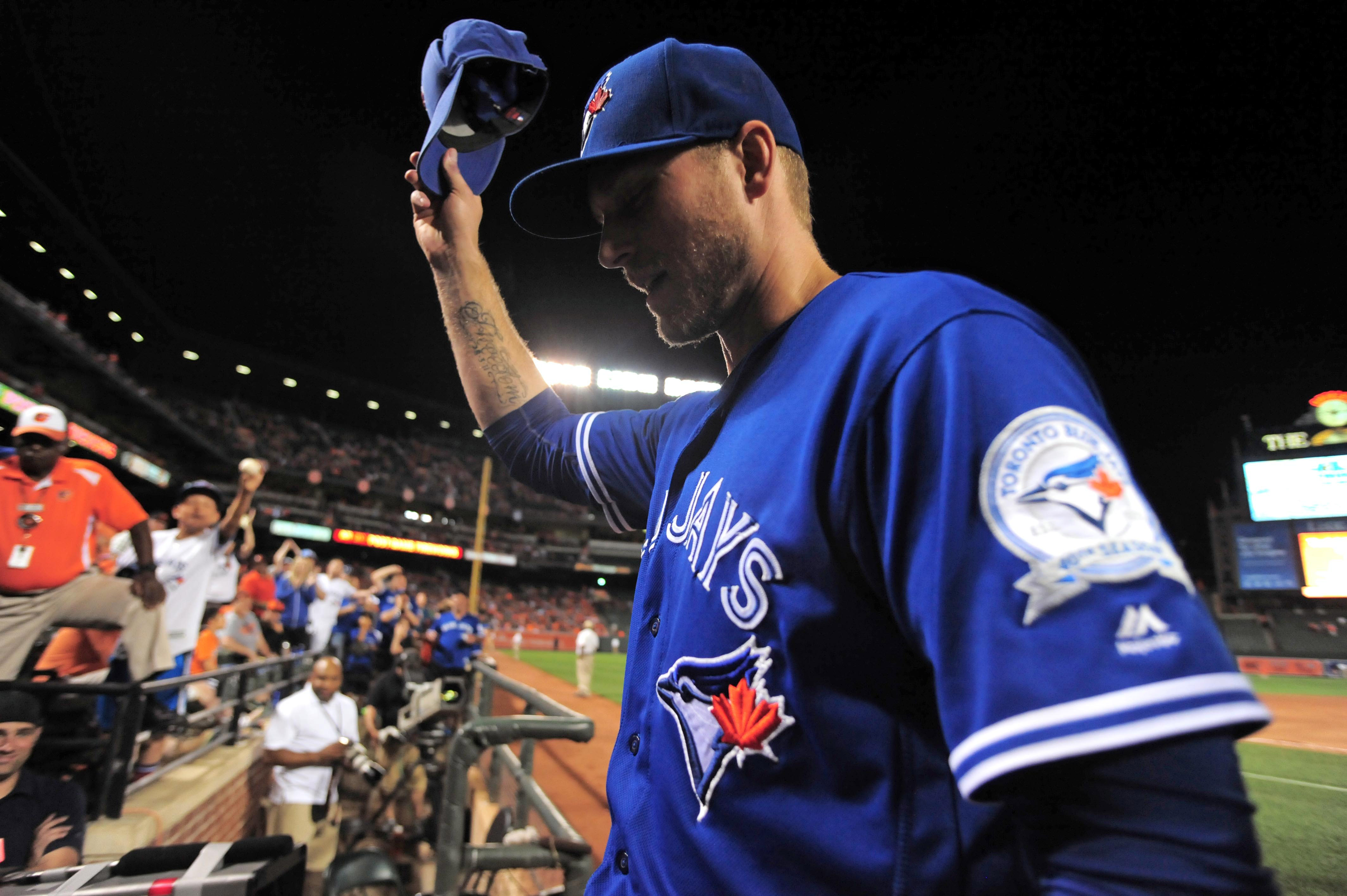As I’m sure you know by now, Michael Saunders has had himself quite the season. Last Friday night, he put an exclamation point on it with a nifty three home run performance.
Those three homers were the 13th, 14th, and 15th of Saunders’ season. On top of that, he’s put up a .335 TAv and 2.0 WARP. At present, that TAv total makes him the second best hitting outfielder in the AL, after Mike Trout. As a result, a number of pundits have started to call 2016 Michael Saunders’ breakout season. In many ways, it is, and he has the narrative to back it.
Over the previous five seasons, Saunders has averaged 82.6 games; just over half a season. That hasn’t been as a result of a lack of performance, but rather a rash of injuries. However, as Eno Sarris noted in a piece at ESPN, there’s been quite a few flukes among the bunch. He writes that, “It’s fair to label Michael Saunders injury-prone. But each injury has an explanation — years of pitching, collision, sprinkler head — and a reason to think they won’t hinder the player going forward.”
This season, Saunders has experienced no such fluke injuries, and there isn’t anything predicting that he’ll do it in the future. Given that, it’s fair to say that 2016 is somewhat of a breakout year: ‘he always had the talent, and now he’s finally healthy’. Though, there are limits to Saunders’ might. Yes, he has hit better. Yes he has been healthy. But we must also consider how much of the better hitting is luck versus skill.
Looking at the traditional indicators, it’s pretty easy to dismiss part of Saunders’ season. He has a .375 BABIP, which is 75 points higher than both where it should be, and his career average. Could there be some reason to think that more of his batted balls should be falling for hits? In general, a hitter’s BABIP is not akin to that of a pitcher, there should be more fluctuation based on a player’s profile. For a player like Mike Trout or Jose Altuve, it is their speed that leads to a higher BABIP: they’re more likely than other players to beat a ground ball to the left side of the infield. As we’ve seen, Saunders isn’t quite as fleet-a-foot as when he regularly played center field for the Mariners. Consequently, it wouldn’t be speed that should raise his BABIP.
In a post last May at RotoGraphs, Alex Chamberlain devised a new formula for ‘xBABIP’, or ‘Expected BABIP’. In addition to utilizing the Spd statistic to measure a player’s speed, the formula takes line drive rate, fly ball rate, hard hit rate, and opposite field hit rate in to account. When you plug in Saunders’ current statistical totals in to the formula, you get an expected BABIP of .321. That’s 21 points above his career average, but 54 points below where he’s currently sitting. So, he has been fairly lucky.
That same luck seems present in his home run totals as well. After the hat-trick of homers, Saunders is now at 15, putting him on pace for 32 on the season. That would be 13 above his career high. He has also posted a career high in another statistic: HR/FB%. 22.4 percent of Saunders’ fly balls have gone over the fence, compared to a career average 12.3 percent. That’s a lot more luck.
With all that said, he does have one saving grace, and that’s how hard he’s hitting the ball this season. Given the newer nature of Statcast, we don’t have a lot of data to draw from, but Saunders is hitting the ball with a bit more force. His average exit velocity on the season is 92.7 MPH, up over two MPH from 2015. Even with small sample size caveats considered, that’s quite the difference. His 2016 average is good for the 34th highest in MLB, and puts him near the likes of Miguel Cabrera, Carlos Correa, and Anthony Rendon. If we look to average home run distance via ESPN’s Home Run Tracker, we see a similar story. This season, Saunders’ homers have averaged 395 feet, compared to 384 in 2014, and 387 in 2013. The last time Saunders was hitting the ball that far was back in 2012, when he hit 19 home runs, and had his first ‘breakout season.’
What does that tell us? Well, Michael Saunders isn’t Superman, contrary to popular belief. Nor is he Batman, Wonder Woman, The Flash, or the Green Lantern. He’s just Michael Saunders. He’s showing power similar to his best previous power season, and plate discipline similar to his best plate discipline season. He has also been really lucky; it’s all coming together at the right time. Over the course of the rest of the season you can expect output from Saunders that is better overall than he’s shown in any previous season, but substantially worse compared to what he’s doing right now. As is often the case with a ‘breakout season’, it’s a combination of factors, but a positive combination for the Jays nevertheless.
Lead Photo: Evan Habeeb-USA TODAY Sports

Matt – I examined park effects in my analysis in selecting Saunders as a breakout candidate in January. The spike in power was pretty predictable based upon his move to Toronto and AL East, as LHB HR% in those parks are abnormally high. Also, the Jays schedule has been stacked with those AL East parks so far this season. His BABIP is surely ripe for regression, but he is exactly on pace for the 25-30 HR’s my analysis suggested.http://jaysfromthecouch.com/2016/01/21/2016-toronto-blue-jays-breakout-candidate-michael-saunders-mlb-news-analysis/